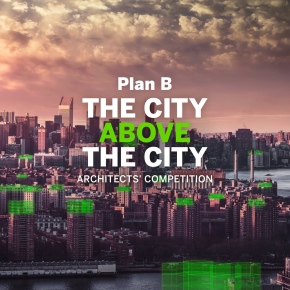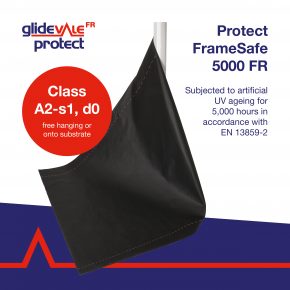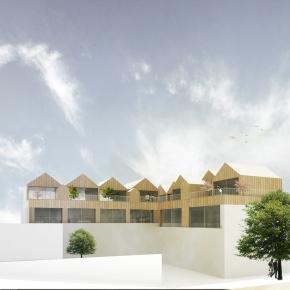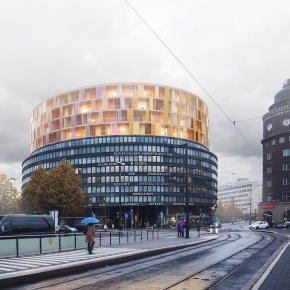
Upwards extensions with Metsä Wood
Extensions to existing buildings it seems are beginning to rise above the urban and industrial areas of Helsinki’s currently rather horizontal skyline. Wood is looking to be useful in extending existing buildings upwards as urbanisation increases and land availability decreases.
According to the UN’s The World’s Cities in 2016 report, more than half of the world’s population is living in the cities. With land and building plots becoming limited in availability, the most obvious way to increase housing is upwards, by building upon the existing fabric of the cities, with the demand for housing continuing to grow globally.
Helsinki is clearly among those cities planning ahead, as part of its urban development.
Guiding and defining the city and its land use far into the future, the new city plan will enable the capital of Finland to grow to at least 860,000 residents by 2050 and aims to have one third of all the residential construction in the city be complementary building. The complementary new residences will then either extend existing building stock or be built directly beside it.
Jari Lonka, architect, agrees with Helsinki’s policy of constructing tall buildings only in strictly delineated districts. However, he says that the horizontal nature of Helsinki doesn’t mean that many existing buildings couldn’t be raised.
The total area of its roofs is about 3,500 hectares, according to the City of Helsinki – the potential above the city is thus enormous for everything from green roofs and solar panels to loft building and additional floors.
Metsä Wood recently hosted an international City Above the City competition which challenged architects from around the world to design innovative wooden extensions for well-known, centrally-located buildings in the world’s most populated cities.
The award-winning proposal, Plug-In, from L Architects, introduced a concept for the iconic building, The Round House, in central Helsinki. The concept includes a wooden extension and has attracted significant interest in Helsinki.
Wood has proven to be a significant solution to urbanisation and building upon the existing, due to its lightness and fast construction time. Consequently, products such as Kerto LVL (Laminated Veneer Lumber), is an ideal material for this challenge.
Mikko Saavalainen, SVP of Business Development at Metsä Wood, said that urbanisation has increased interest in building with wood, making potential for timber extensions large.
Visit Supplier's page
Latest news

26th November 2024
Glidevale Protect expands its fire rated wall membrane range
Glidevale Protect has strengthened its flame retardant offering with the launch of its Protect FrameSafe 5000 FR external wall membrane designed for open façade cladding applications.
Posted in Articles, Building Industry News, Building Products & Structures, Building Regulations & Accreditations, Building Services, Cladding, Facades, Health & Safety, Innovations & New Products, Membranes, Restoration & Refurbishment, Retrofit & Renovation, Walls
22nd November 2024
Insight Data: Using Marketing Data to Build a Successful Business in 2025
Alex Tremlett, Insight Data’s Commercial Director, discusses the challenges for construction firms in 2025 and shares six strategies for success…
Posted in Articles, Building Industry News, Building Services, Information Technology, news, Research & Materials Testing
22nd November 2024
Purplex: A tough Budget, but opportunity still knocks
Incoming governments, especially those with significant mandates, inevitably come into power on a tidal wave of optimism coupled with hope that ‘Things can only get better’. Andrew Scott, MD of construction-focused, full-service agency Purplex, talks…
Posted in Articles, Building Industry News, Building Services, Information Technology, news, Posts, Research & Materials Testing
22nd November 2024
Pop Up Power Supplies Gets Arty in Yorkshire
Pop Up Power Supplies has installed 13 new electricity units at The Hepworth Wakefield – read more in this article…
Posted in Articles, Building Industry News, Building Products & Structures, Building Services, Case Studies, Civil Engineering, Facility Management & Building Services, Garden, Hard Landscaping & Walkways, Landscaping, Posts, Restoration & Refurbishment, Retrofit & Renovation
 Sign up:
Sign up: 
